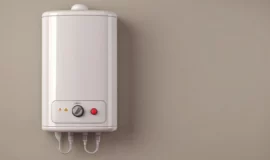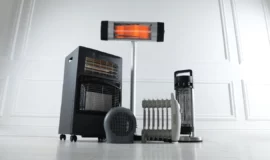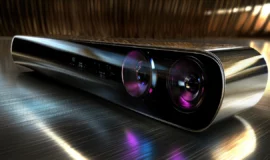
Solar panels are an effective way of consuming electricity without the fear of high bills. But making the right choice matters the most. However, while installing the solar panel systems, you might have gone through their types: off-grid, on-grid, and hybrid solar panel systems, but it is also important to know the types of solar panels. Let’s explore some of them in the blog.
Monocrystalline Solar Panels
The monocrystalline solar panel is a popular type of solar panel. As the name suggests, it is made of a single layer of silicon. Now, you might be wondering how it helps in generating electricity.
We know that solar panels work when sunlight falls on them. This gives rise to the electric field, allowing electrons to move freely. As monocrystalline is single-layered, it offers more room, hence more electricity is created. Considering the other types of solar panels, monocrystalline has the highest solar panel efficiency.
- Efficiency: 15 to 22%
Pros and Cons of Monocrystalline Solar Panels
The following are the pros and cons of monocrystalline solar panels that you need to know:
| Pros | Cons |
| High efficiency | High cost |
| Performs well even in low sunlight | Limited size of the panel |
| Requires less panel space |
Polycrystalline Solar Panels
Polycrystalline solar panels are another type of solar panel that is less efficient than monocrystalline solar panels. As the name suggests, this type of solar panel is made of multi-structured silicon cells. This is done by melting silicon crystals together. It is recognized by its blueish hue and textured appearance, lacking the uniform crystal appearance on its surface. The following is the percentage of how efficient polycrystalline solar panels are:
- Efficiency: 15 to 20%
Pros and Cons of Polycrystalline Solar Panels
Let’s have a look at the pros and cons of polycrystalline solar panels:
| Pros | Cons |
| Less expensive than a polycrystalline solar panel | Blueish and less uniform appearance |
| 25 to 30 years lifespan | Fewer efficiencies and more plates are required |
Thin-Film Solar Panels
Thin-film is another main type of solar panel that lacks silicon material. Instead, silicon is made differently by utilizing a light-absorbing or semiconductor material such as cadmium telluride (CdTe), amorphous silicon (a-Si), and copper indium gallium selenide (CIGS). Furthermore, you need to know that it is the least efficient when compared to the monocrystalline and polycrystalline solar panels. The following is its efficiency:
- Efficiency: 10 to 20%
Pros and Cons of Thin-Film Solar Panels
Consider the following table to know the pros and cons of thin-film solar panels:
| Pros | Cons |
| Budget-friendly | Least efficient |
| Available in different materials | Requires a lot of space as more panels are required |
| Demands high maintenance due to lower durability |
Mono-Facial Solar Panels
Mono-facial is one of the best solar panels type have the cells located at the front of the solar panel. Sunlight falls on the front of the panels and it generates energy. However, in mono-facial type of solar panels, it is important to place them at the right solar panel angle so that they consume maximum sunlight.
- Efficiency: Depends on how much sunlight falls on the panel.
Pros and Cons of Mono-Facial Solar Panels
The following are its pros and cons:
| Pros | Cons |
| Low initial cost | Low efficiency |
| Easy installation | Absorbs less sunlight |
Bifacial Solar Panels
Unlike the traditional mono-facial solar panels, bifacial solar panels have the solar cells on both sides of the panels. Therefore, they consume sunlight from both sides and are considered to be more efficient than the mono-facial panels.
- Efficiency: 25 to 30% more efficient than monofacial solar panels
Pros and Cons of Bifacial Solar Panels
Here are some pros and cons of bifacial solar panels:
| Pros | Cons |
| Improved efficiency | High initial cost and installation charges |
| High performance even in low light |
Conclusion
To sum up, if you are somebody getting solar panels installed, understanding the types of solar panels is crucial. There are multiple types, but monocrystalline, polycrystalline, and thin-film are the major ones. However, explore all of these in detail to make the right decision for solar panels.
FAQs
Monofacial solar panels have the solar cells on one side of the panel, whereas bifacial solar panels have the solar cells on both sides.
Monocrystalline solar panels have the maximum solar panel efficiency of 15 to 22%.








Leave a Reply